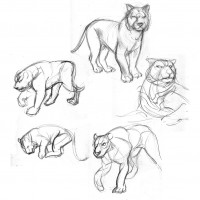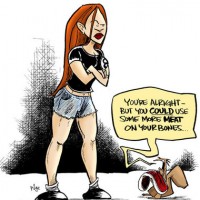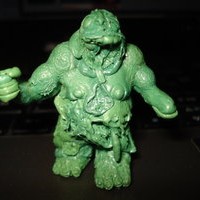 Drawing animals is really one of the very exciting things your kids can learn. Because they draw, they are able to understand a great deal. The first phases of the drawing will even allow you to know and see any talents your baby might have in the drawing area. However, I would recommend you to go to zoo with your children and observe animals in real life before you will teach them how to draw them, or you can visit one of many websites about urban wildlife, for example, this one 2sstudio.net.
Drawing animals is really one of the very exciting things your kids can learn. Because they draw, they are able to understand a great deal. The first phases of the drawing will even allow you to know and see any talents your baby might have in the drawing area. However, I would recommend you to go to zoo with your children and observe animals in real life before you will teach them how to draw them, or you can visit one of many websites about urban wildlife, for example, this one 2sstudio.net.
You will find the step to step recommendations your child can use in order to attract animals. As a parent, you want only the best for your own child, and you might decide to have lessons in order in order to educate your child everything that you want them all to learn. You too can take your kids to drawing lessons where they could socialize with several other kids thus the training process gets more enjoyable.
Once the kids are taught the way to draw, it becomes fairly simple and interesting, and they are able to proudly showcase the amazing work for the parents. For your child, self-respect is coasted amazingly. Whenever you would like your own kid to draw, there is not any requirement for expensive guides. Easy manual guides could be successfully employed.
The great thing about drawings is the reality it is not needed to understand the way to read and write. That makes it quite proper for small ones, which is absolutely thrilling. A child or adult can understand easy measures of drawing some 200 animals in the briefest time possible. A parent would definitely feel very happy to see their small one’s face light-up in delight.
There’s a way you will be able to tell that small ones like to draw. You may see them doodle every time they hold a pencil and paper. The minute a child attempts to attract and fails, they completely give up the enterprise particularly if they develop the approach that they will never be able to-do it. Support the kid and instruct him how to create the simplest of drawings. This goes quite a distance into boosting the kid and propelling him to actions.
You might think about purchasing one of the numerous publications available on the marketplace today. They might even surprise you by having the ability to check out the illustrated diagrams and producing unbelievable drawings all by themselves. This could really be achieved in the least time period.
The kid does not need to understand the way to see. Most publications may have only illustrations. The animals are separated into drawings certainly indicating how one should start each and every measure along the drawing. Your son or daughter will really learn a lot from this so do not make it possible for them to miss out on the chance.
If you need to know the way to draw animals step-by-step, see us and discover free drawing lessons for children and parents to learn horse drawing.
 Greetings and hello!
Greetings and hello! It’s no secret that I love parasites. They are elegant and bizarre, and ubiquitous! Every living thing on the planet is host to it’s own unique medley of internal parasites. Is it not comforting to know that one is never alone?
It’s no secret that I love parasites. They are elegant and bizarre, and ubiquitous! Every living thing on the planet is host to it’s own unique medley of internal parasites. Is it not comforting to know that one is never alone? Drawing animals is really one of the very exciting things your kids can learn. Because they draw, they are able to understand a great deal. The first phases of the drawing will even allow you to know and see any talents your baby might have in the drawing area. However, I would recommend you to go to zoo with your children and observe animals in real life before you will teach them how to draw them, or you can visit one of many websites about urban wildlife, for example, this one
Drawing animals is really one of the very exciting things your kids can learn. Because they draw, they are able to understand a great deal. The first phases of the drawing will even allow you to know and see any talents your baby might have in the drawing area. However, I would recommend you to go to zoo with your children and observe animals in real life before you will teach them how to draw them, or you can visit one of many websites about urban wildlife, for example, this one